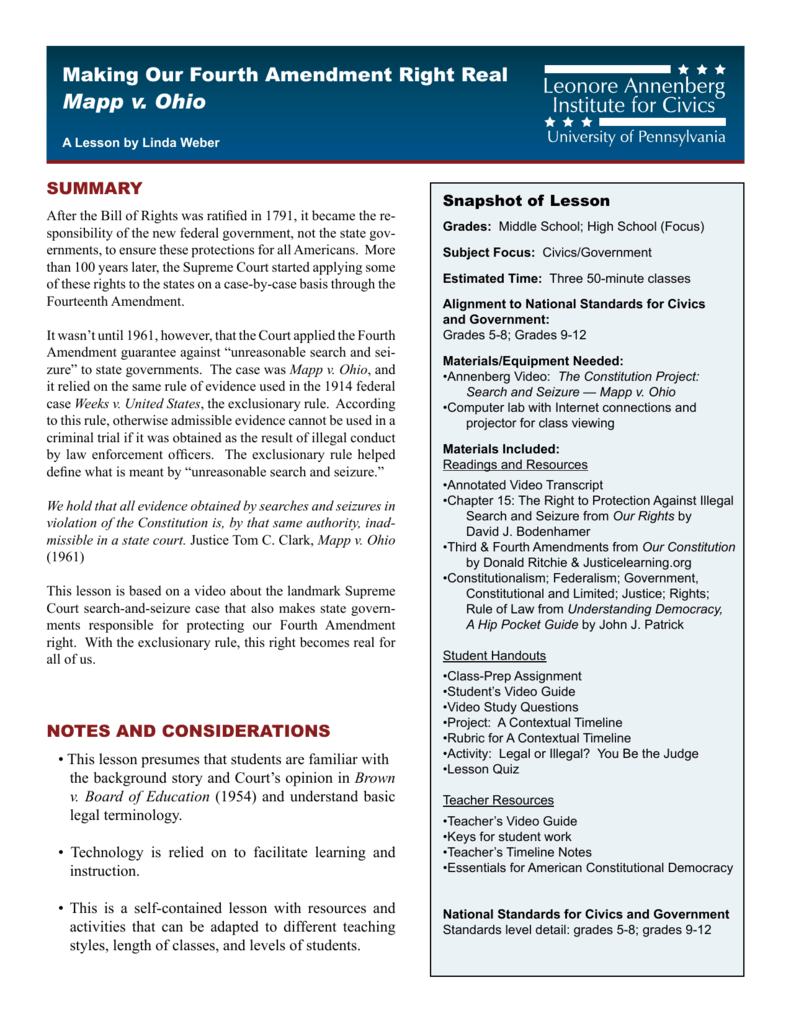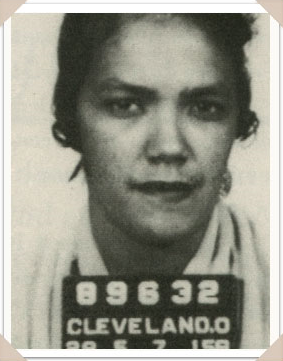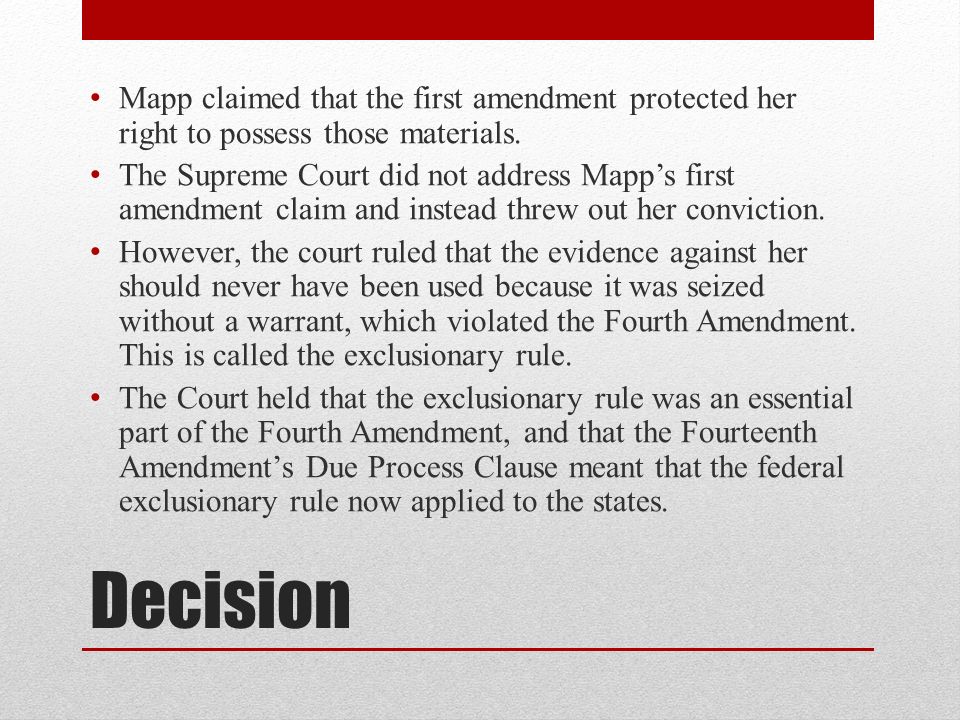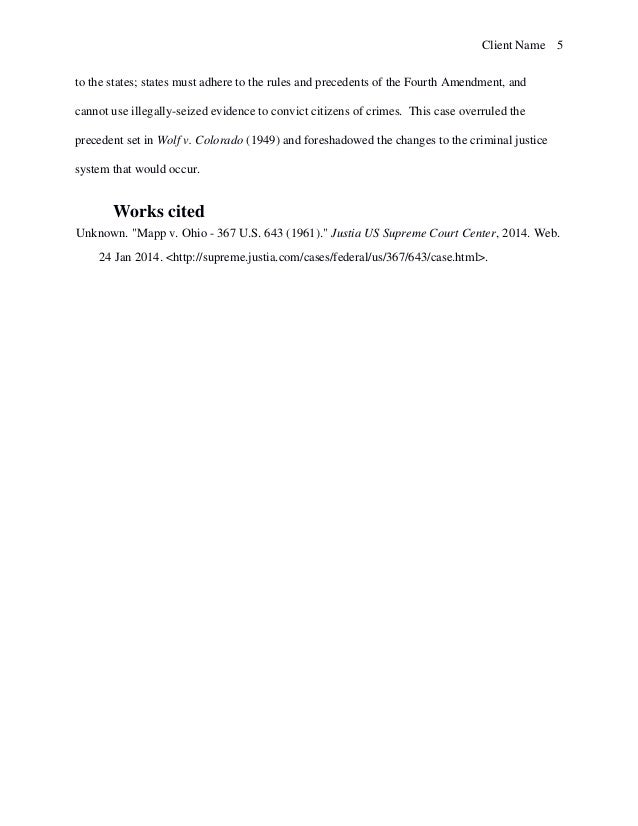What Was The Impact Of The Mapp V Ohio Case
One such constitutional right that just about everyone here in Colorado knows is their Fourth Amendment right that protects. The court case Mapp v.
Generically the 4th Amendment to the Constitution of the United States establishe.

What was the impact of the mapp v ohio case. Ohio had a significant impact on the United States. Just as you have to follow the law so too do law enforcement agencies. OHIO decided on 20 June 1961 was a landmark court case originating in Cleveland in which the US.
In 1957 a woman named Dollree Mapp worked for an illegal gambling operation in Cleveland Ohio. Ohio as the government must obey the law when enforcing it He argues that the impacts of Mapp are most felt in areas where law enforcement has the least restraint imposed upon them. The Fourt Ammendment sets.
The police received an anonymous tip that Virgil Ogletree who was wanted for questioning about a bombing was hiding in Mapps home. Was there a warrant in Mapp v Ohio. What was the impact of the Mapp v Ohio case.
No suspect was found and Mapp was arrested of possessing obscene pictures and was convicted in an Ohio court. The most significant impact of Mapp v. Mapp appealed to the United States Supreme Court and the decision was made that the Supreme Court said.
In the case Mapp V. Because of what these police did not using a warrant and practically just barging into her house evidence gained by an illegal search became unallowable in state courts as a result of the decision. Supreme Court on June 19 1961 strengthened the Fourth Amendment protections against unreasonable searches and seizures by making it illegal for evidence obtained by law enforcement without a valid warrant to be used in criminal trials in both federal and state courts.
A little known case that had a big impact. What impact did Mapp v Ohio have on law enforcement. What happened in the court case of Mapp v Ohio and how it was resolved.
Ohio decided by the US. Constitution applies not only to the US. Supreme Court ruled that under the 4th and 14th Constitutional amendments illegally seized evidence could not be used in a state criminal trial.
The Supreme Courts 5-4 decision overturned Mapps conviction on the grounds that evidence seized without a search warrant cannot be used in state criminal prosecutions under the 4th Amendment to the Constitution which protects against unreasonable searches and seizures and the 14th Amendment which extends. The police suspected that Mapp was part of a. Constitution which prohibits unreasonable searches and seizures is inadmissible in state courts.
The exclusionary rule is no longer as absolute as when first handed down in Mapp v. Supreme Court on June 19 1961 ruled 63 that evidence obtained in violation of the Fourth Amendment to the US. Constitution which prohibits unreasonable searches and seizures is inadmissible in state courts.
Lewis Katz at the Case Western University School of Law sums up the fundamental outcome of Mapp v. Ohio case in which the US. Ohio of 1961 police forced their way into Dollree Mapps house suspecting her of harboring a suspected bomber.
This decision significantly changed state law-enforcement procedures throughout the country. Ohio case in which the US. I am answering this question only after having read through information obtained via research results available online.
Supreme Court on June 19 1961 ruled 63 that evidence obtained in violation of the Fourth Amendment to the US. This includes not only following state and federal laws but avoiding actions that could violate a persons constitutional rights as well. 643 1961 was a landmark decision of the US.
The case of Mapp v. Ohio decided in 1961 by the United States Supreme Court established that US citizen and non-citizen criminal defendants could invoke an exclusionary rule to suppress evidence that was. This aggressive pounding might have been the noise that greeted Dollree Mapp on May 23rd 1957 in Cleveland Ohio.
Supreme Court in which the Court ruled that the exclusionary rule which prevents prosecutors from using evidence in court that was obtained by violating the Fourth Amendment to the US. Ohio was a 1961 landmark Supreme Court case decided 63 by the Warren Court in which it was held that Fourth Amendments protection against unreasonable searches and seizures applied to the states and excluded unconstitutionally obtained evidence from use in state criminal prosecutions. The police went to Mapps home and asked for permission to enter but she refused to let them in without a search warrant.

Mapp V Ohio By Gavin Koonts 10 27 13 Block 2 Mapp V Ohio Dollree Mapp V State Of Ohio Argued March 29 1961 Decided June 19 Ppt Download

Brief Of Mapp V Ohio 1961 Case Study Sample

Mapp V Ohio Viewing Guide Bill Of Rights Institute

Mapp V Ohio Powerpoint 10 20 Pptx Mapp V Ohio In 1961 Dollree Mapp Was Convicted In 1957 Of Possession Of Pornography But The Supreme Court Overturned Course Hero

Mapp V Ohio The Origin Of The Exclusionary Rule In State Courts Federal Appeals Law Firm Blog

Mapp Vs Ohio 1961 Supreme Court Case

Mapp V Ohio By Kaitlyn Bloomquist

4th Amendment The Papers Of Justice Tom C Clark Tarlton Law Library At Tarlton Law Library

Mapp V Ohio 1961 Ppt Video Online Download

Mapp V Ohio The Decision C Span Org

Mapp V Ohio Annenberg Classroom

Wesley M Oliver The Anachronistic Exclusionary Rule Pittsburgh Post Gazette

Mapp V Ohio 1961 Ppt Video Online Download






Post a Comment for "What Was The Impact Of The Mapp V Ohio Case"